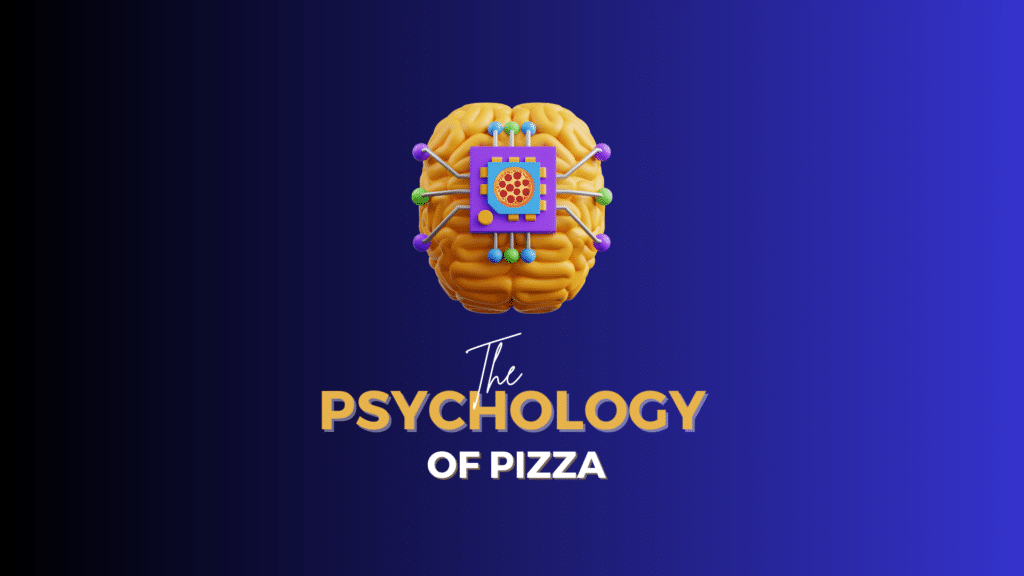I’ve come across many fascinating aspects of human behavior, and today, I’m excited to share with you a delicious topic— the psychology of pizza!
You might wonder, “What does pizza have to do with psychology?”
Well, you’re in for a treat because pizza is a culinary delight and a perfect example of how our minds and emotions play a role in our food choices.
This captivating exploration will delve into the sensory perceptions that make pizza irresistible, from its visually appealing elements to its mouthwatering aroma and flavors. We’ll also uncover the emotional connections that make pizza a comfort food, how it brings us together socially, and even the nostalgia it evokes.
Moreover, we’ll discuss how decision-making and behavior are influenced by pizza, touching on topics like variety, customization, and the impact of pizza on our health.
I promise this won’t be a boring lecture or filled with complicated psychological terms. We’ll have a blast while learning, using simple language, and engaging in entertaining facts supported by reliable research and studies.
So, grab a slice of pizza (if you have one nearby), sit back, and join me on this delicious journey to understand why we all seem to have a special place in our hearts (and stomachs) for this heavenly creation.
Ready to dive into the world of pizza and the human mind?
Let’s get started!
Here’s What You Will Find:
Pizza History
Now that we’re all warmed up and ready to explore, let’s begin with a brief background on pizza’s history and popularity. This iconic dish we all love so much can trace its roots back to ancient times.
However, in 18th century Naples, Italy, pizza began to take the shape we know and love today, with the classic Margherita pizza as a prime example. As pizza made its way across the globe, it continued to evolve, taking on new flavors and forms that resonated with local tastes and cultures.
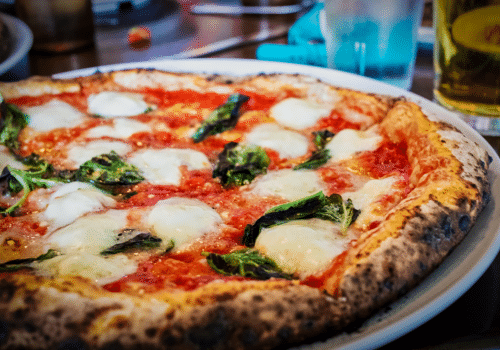
Now, you might be wondering how this ties into the psychology of pizza. Well, the widespread appeal of pizza and its ability to adapt to diverse tastes are key factors in understanding its psychological allure. As pizza spread to different parts of the world, it maintained its fundamental characteristics and embraced regional ingredients and preferences.
This adaptability made it a versatile and beloved dish, catering to various palates and satisfying our innate desire for variety.
Pizza Popularity
Pizza’s popularity can be largely attributed to its versatility, mouthwatering taste, and its ability to cater to the preferences of just about everyone. With countless options for customization, pizza is a fantastic food for sharing among family and friends.
Additionally, pizza is generally an affordable option, which has helped it become a go-to choice for families and those seeking a delicious meal without breaking the bank.
To further illustrate the widespread love for pizza, we’ve included a chart depicting the average annual pizza consumption per capita in various countries, ranked from highest to lowest.
Average Annual Pizza Consumption Per Capita
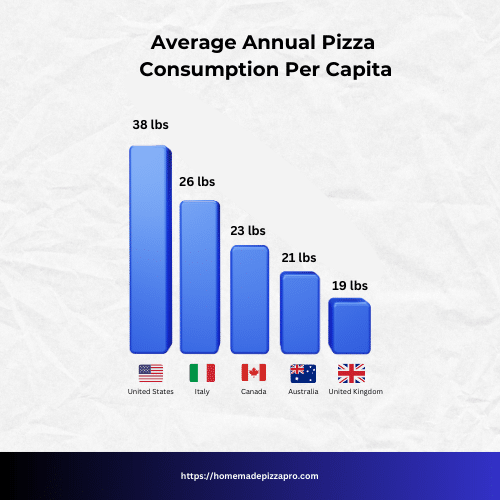
The United States has the highest average consumption, at 38.0 pounds per capita. Italy is second, at 26.2 pounds per capita. Canada is third, at 23.3 pounds per capita. Australia is fourth, at 21.5 pounds per capita. And the United Kingdom is fifth, at 19.6 pounds per capita.
The chart demonstrates that the United States consumes the most pizza per capita globally, followed by Italy, Canada, Australia, and the United Kingdom. The high pizza consumption in these countries is likely due to several factors, including the availability of pizza, its affordability, and its cultural significance.
By understanding pizza’s global popularity, we can better appreciate the role that history, culture, and culinary adaptability play in shaping our psychological connection to this irresistible dish. With this foundation in place, we’re ready to delve deeper into the fascinating world of pizza psychology and uncover the secrets behind our love affair with this delicious creation.
Psychology and Pizza Consumption
You might wonder why it’s essential to understand the psychology behind pizza consumption, especially given its widespread popularity and historical significance. Well, there are several compelling reasons to explore this topic.
Eating habits and preferences
First and foremost, by examining the psychological aspects of pizza consumption, we can gain valuable insights into our own eating habits and preferences. As we uncover the factors that make pizza so irresistible, we can use that knowledge to make more mindful choices regarding our diets. Understanding the driving forces behind our cravings can help us balance indulgence and moderation in a world where health and wellness are increasingly important.
Emotions and senses
Secondly, understanding the psychology behind pizza can shed light on how our emotions and senses influence our food choices. As we explore the various factors contributing to pizza’s appeal, we can extend this knowledge to other food items, ultimately helping us develop a healthier relationship with food.
Human Behavior
Lastly, the psychology of pizza consumption can also be a fascinating and engaging way to learn about human behavior, social connections, and decision-making processes. As we uncover the emotional, sensory, and cognitive factors that make pizza so alluring, we can better appreciate the complex interplay between our minds, emotions, and food.
To further emphasize the importance of understanding the psychology behind pizza consumption, let’s take a moment to consider how much pizza we actually consume compared to other popular food items. To help put things into perspective, we’ve prepared a table showcasing the average annual consumption (in pounds) of various foods, including pizza.
Average Annual Food Consumption
| Food | Average Annual Consumption (pounds) |
|---|---|
| Pizza | 46.2 |
| Chicken | 91.2 |
| Beef | 74.4 |
| Pork | 45.8 |
| Fish | 14.9 |
| Eggs | 27.2 |
| Milk | 62.8 |
| Cheese | 36.4 |
| Bread | 157.3 |
As you can see, pizza holds a significant place in our diets, with an average annual consumption of 46.2 pounds per person. This data highlights the importance of understanding the psychological factors contributing to pizza’s allure, as it plays a substantial role in our eating habits.
Pizza’s popularity is likely due to its versatility and affordability. It can be eaten for breakfast, lunch, or dinner and customized to suit any taste. Additionally, pizza is relatively affordable, making it a popular choice for families and budget-minded consumers.
It is important to note that these figures are just averages. The amount of pizza people eat varies based on age, income, and location. For example, young adults eat more pizza than older adults, and people who live in urban areas tend to eat more pizza than those who live in rural areas.
Pizza Sensory Perception
We must consider sensory perception’s role in our love for this dish. Our senses are constantly at work as we interact with food, and pizza is no exception. Let’s explore each sensory aspect in more detail.
Sight: Pizza’s visually appealing elements
The visual appeal of pizza is a crucial factor in its attractiveness. Its vibrant colors, from the red tomato sauce to the golden crust and melted cheese, create a visual feast that draws us in. The contrasting hues of various toppings add to this appeal, making it even more enticing. Research has shown that visually appealing food can stimulate appetite and increase our desire to consume it; pizza is a prime example of this phenomenon.
Smell: The role of aroma in stimulating appetite
The aroma of a freshly baked pizza is undeniably alluring. As the pizza bakes, the combination of ingredients releases a symphony of scents that can be hard to resist. The smell of pizza stimulates our olfactory senses, which are closely linked to our brain’s appetite and reward centers. In fact, studies have shown that simply smelling pizza can trigger feelings of hunger and cravings, even if we’re not physically hungry.
Taste: Flavor combinations that make pizza irresistible
Pizza’s taste is a harmonious blend of flavors that cater to our taste buds. The tangy tomato sauce, rich cheese, and various toppings create a savory and slightly sweet flavor profile. Pizza also tends to have a high level of umami, a savory taste that has been linked to increased feelings of satisfaction and fullness. Pizza’s balance of flavors excites our taste buds and makes it difficult to resist reaching for another slice.
Texture: The impact of pizza’s crust, cheese, and toppings on the mouthfeel
Finally, the texture of pizza plays a significant role in its overall appeal. Combining a crispy or chewy crust, melted cheese, and various toppings provides a delightful contrast of textures that can be incredibly satisfying. Our mouths are sensitive to texture, and pizza’s variety can contribute to the pleasure we experience while eating it. The interplay of textures also piqued our interest, further enhancing the sensory experience of consuming pizza.
These sensory aspects of pizza, from sight to texture, are crucial components of its psychological appeal and help explain why it’s such an irresistible and universally loved dish.
Pizza Emotional Connection
As we continue to explore the psychology of pizza, it’s important to delve into our emotional connections with this beloved dish. Our emotional ties to food can significantly impact our cravings, preferences, and eating habits. Let’s take a closer look at the emotional aspects that contribute to pizza’s appeal.
Comfort food: The psychological association of pizza with warmth and happiness
Pizza is often considered a comfort food, and this emotional association plays a significant role in its popularity. Comfort foods are typically associated with feelings of warmth, safety, and happiness, often evoking positive emotions and memories.

The combination of carbohydrates, fat, and satisfying flavors found in pizza can trigger the release of feel-good chemicals in our brains, like serotonin and dopamine, which enhance our mood and contribute to its comforting effect.
Nostalgia: The role of childhood memories and cultural associations in pizza’s appeal
Research shows nostalgia also plays a crucial role in our emotional connection with pizza. For many people, pizza is linked to fond memories from childhood or family traditions, such as pizza parties, movie nights, or celebratory events. These nostalgic associations can create a sense of longing and sentimental attachment to pizza, making it an emotionally satisfying choice when we’re seeking to relive or recreate those cherished moments.
Furthermore, pizza’s cultural associations with Italy and Italian-American communities add another layer of an emotional connection for some, as they may associate pizza with their own cultural heritage or positive experiences with Italian culture.
Social bonding: Pizza’s influence on social interactions and gatherings
Pizza uniquely brings people together, making it an essential part of many social gatherings, from casual get-togethers to more organized events. The shareable nature of pizza encourages conversation and interaction as people pass around slices and discuss their favorite toppings. This communal aspect of pizza consumption helps strengthen social bonds and creates a sense of camaraderie among those sharing the meal.

Additionally, the act of sharing food, like pizza, can promote feelings of trust and cooperation within a group. Research has shown that sharing food can enhance our perception of others, increasing feelings of closeness and connection. Therefore, pizza’s role as a social food contributes to its emotional appeal and fosters deeper connections between those who enjoy it together.
Our emotional connection with pizza is a significant factor in its psychological appeal. Researchers are saying that how you eat pizza can be used to identify your essential personality qualities. From its comforting nature and nostalgic associations to its ability to unite people, pizza satisfies our emotional cravings as much as our physical hunger. By understanding these emotional aspects, we can better appreciate pizza’s powerful role in our lives and our love for this universally adored dish.
Decision-Making Process
Examining the decision-making process that influences our pizza-related choices is essential. From selecting toppings to choosing a particular pizza brand, various factors come into play when deciding what type of pizza to enjoy. Let’s dive deeper into these elements and their impact on our pizza preferences.
Variety and customization: The psychology of choice in pizza toppings
One of the most appealing aspects of pizza is its versatility, allowing for countless customization options. The abundance of toppings and combinations available caters to a wide range of tastes and preferences. The psychology of choice comes into play here, as individuals enjoy the freedom to create a pizza that aligns with their unique desires.
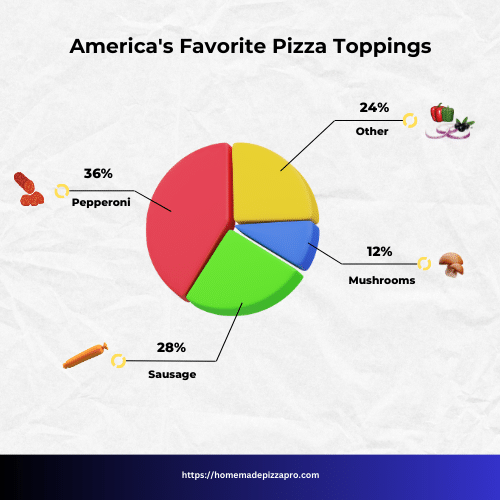
The pie chart is divided into 8 slices, each representing a different topping. The largest slice, representing 36% of all pizza orders, is pepperoni. The next largest slices are sausage (28%), mushrooms (12%), onions (10%), green peppers (9%), extra cheese (8%), and olives (6%).]
As you can see, pepperoni is the most popular pizza topping in the United States. This is followed by sausage, mushrooms, onions, green peppers, extra cheese, and olives. These toppings are popular because they add flavor and texture to the pizza. They also appeal to a wide range of people, making them a good choice for pizza restaurants.
In addition to the toppings shown in the chart, there are many other popular pizza toppings. Some of these include bacon, pineapple, chicken, and spinach. The popularity of these toppings varies depending on the region of the United States. For example, pineapple is popular in Hawaii, while chicken is popular in the South.
However, it’s important to note that too many options can sometimes lead to decision fatigue, where individuals may feel overwhelmed by the sheer number of choices. In such cases, individuals may rely on past experiences or opt for familiar combinations to simplify decision-making.
Perceived value: How price and portion size affect pizza preferences
The perceived value of a pizza can also significantly influence our choices. Factors such as price, portion size, and ingredient quality come into play when determining the value of a pizza. Consumers often weigh the cost against the expected satisfaction to decide whether a pizza is worth their investment.
Promotions and deals, such as “buy one, get one free” or discounted prices, can affect our perception of value and influence our decision to choose a specific pizza. Additionally, the portion size can impact our preferences, as larger pizzas may be perceived as better value for the money, encouraging customers to opt for more substantial options.
Brand loyalty: The influence of marketing and personal experiences on pizza choices
Brand loyalty plays a crucial role in our pizza-related decision-making. Consumers often develop a sense of loyalty towards specific pizza brands based on factors such as taste, quality, service, and overall experience. Marketing efforts, including advertisements, social media campaigns, and promotional deals, can also contribute to brand loyalty by shaping our perception of a particular pizza brand.
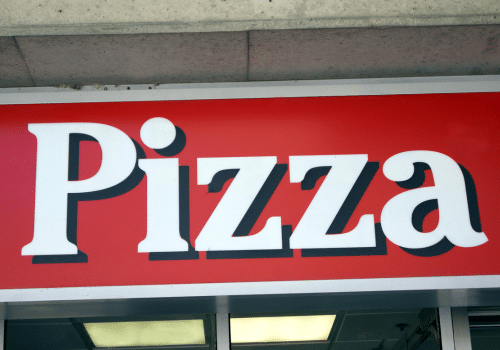
Personal experiences, such as consistently good service, enjoyable flavors, or positive memories associated with a specific brand, can also solidify our loyalty and make us more likely to choose that brand over others. Moreover, the influence of friends, family, and online reviews can impact our pizza preferences, as we tend to trust the recommendations of others and may be more inclined to try a pizza brand based on positive testimonials.
The decision-making process behind pizza choices involves a complex interplay of factors, including variety, perceived value, and brand loyalty. By understanding these influences, we can gain a deeper appreciation for the psychology of pizza and the factors that contribute to its enduring popularity.
Impact of Pizza on Behavior and Health
It’s important to consider the impact of pizza on behavior and health. Pizza’s influence on our neurological responses, eating habits, and overall well-being are essential factors to explore. Let’s take a closer look at these aspects and how they relate to our love for pizza.
Reward and addiction: The neurological response to pizza consumption
Eating pizza can trigger a neurological response, activating the brain’s reward and pleasure centers. Combining high-calorie ingredients like cheese, sauce, and dough can release feel-good chemicals like dopamine, creating a sense of satisfaction and pleasure.
This rewarding feeling can lead to cravings and even addictive-like behavior, as we may seek to replicate these positive feelings by consuming more pizza.
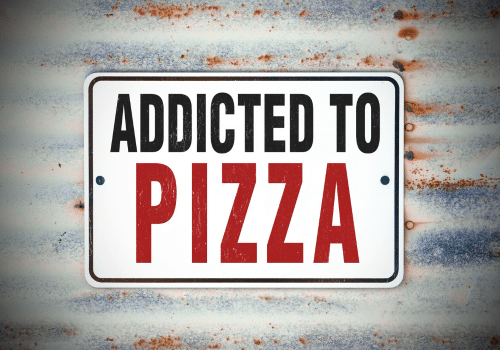
Overeating and moderation: The challenges of portion control with pizza
Due to pizza’s rewarding sensations and satisfying flavors, it can be challenging to practice portion control and moderation when consuming this dish. The shareable nature of pizza, coupled with its enticing aroma and taste, can make it difficult to resist reaching for additional slices.
This can lead to overeating and a higher calorie intake, which, if not managed appropriately, could contribute to weight gain and other health concerns.
Practicing mindful eating and setting limits on portion sizes can help combat portion control challenges with pizza. Awareness of our hunger and fullness cues and savoring each bite can promote healthier eating habits and reduce the likelihood of overindulging.
Health concerns: The psychological effects of pizza’s nutritional content
While pizza can be an enjoyable treat, it’s important to be mindful of its nutritional content. Traditional pizza is often high in calories, fat, and sodium, which, when consumed in excess, can contribute to various health issues, such as obesity, high blood pressure, and heart disease.
The psychological impact of these health concerns can lead to feelings of guilt or anxiety when consuming pizza, particularly for those who are health-conscious or have specific dietary needs.
To address these concerns, healthier pizza alternatives have gained popularity, featuring whole-grain crusts, plant-based toppings, and reduced-fat cheese options. These alternatives can help mitigate traditional pizza’s negative health effects while allowing individuals to enjoy the flavors and textures they love.
Understanding the impact of pizza on behavior and health is essential for fully appreciating pizza’s psychology. By being aware of the neurological responses, challenges of portion control, and health concerns associated with pizza consumption, we can make informed choices and foster a healthier relationship with this popular dish.
Why Do People Love to Eat Pizza?
Let’s embark on a flavorful journey to uncover the reasons behind our love for pizza!
In the following list, we’ll explore the irresistible qualities that make pizza such a beloved dish worldwide. From its delightful taste to its role in social gatherings, we’ll summarize the key factors that keep us returning for more slices of this delicious culinary masterpiece.
- Flavor: Pizza offers a delicious combination of flavors, from the tangy tomato sauce and savory cheese to various toppings that cater to different tastes.
- Customization: Pizza is highly customizable, allowing individuals to create their perfect combination of toppings and crust styles to suit their personal tastes.
- Shareability: Pizza is an ideal food for sharing, making it a popular choice for social gatherings, parties, or family meals.
- Comfort food: Pizza is often regarded as a comfort food, providing a sense of warmth, satisfaction, and happiness when consumed.
- Versatility: Pizza can be enjoyed as a casual meal, a quick snack, or a gourmet dining experience, depending on the ingredients and preparation methods used.
- Affordability: Pizza is generally budget-friendly, making it an attractive option for many consumers.
Tips to Harness the Psychology of Pizza
It’s crucial to consider strategies to help us harness this knowledge and develop a healthier relationship with pizza. We can enjoy pizza without compromising our well-being by employing mindful eating techniques, seeking healthier alternatives, and balancing indulgence with self-care. Let’s delve into these strategies in detail.
Mindful eating: Techniques to develop a healthier relationship with pizza
Mindful eating is an approach that involves being fully present and aware of our hunger, taste sensations, and fullness cues while enjoying food. Implementing mindful eating techniques when consuming pizza can help us develop a healthier relationship with this dish. Some of these techniques include:
- Eating slowly and savoring each pizza slice allows our brain to register fullness signals and reduces the likelihood of overeating.
- Paying attention to hunger cues and stopping when we feel satisfied rather than eating until we’re uncomfortably full.
- Minimizing distractions during mealtime, such as turning off the television or putting away our phones, to fully focus on the eating experience.
Healthier alternatives: Nutritious pizza options that satisfy cravings
Opting for healthier pizza alternatives can help us enjoy the flavors and textures we love without the guilt or potential health risks associated with traditional pizza. Some nutritious pizza options include:
- Whole-grain or cauliflower crusts provide more fiber and nutrients than regular white flour crusts.
- Plant-based toppings, such as fresh vegetables, lean proteins, and even fruit, can boost the pizza’s nutritional value while offering various flavors.
- Reduced-fat cheese options or using smaller amounts of cheese to lower the pizza’s overall calorie and fat content.
Making pizza a positive experience: Balancing indulgence and self-care
Finding a balance between indulgence and self-care is essential for maintaining a positive relationship with pizza. This can involve:
- Enjoying pizza in moderation and as part of a balanced diet rather than relying on it as a primary source of nutrition.
- Treating pizza as an occasional indulgence or reward rather than associating it with negative emotions or guilt.
- Incorporating pizza into social gatherings and bonding experiences to create positive associations and memories.
New research shows that by employing strategies like mindful eating, choosing healthier alternatives, and balancing indulgence with self-care, we can harness the psychology of pizza to foster a healthier relationship with this popular dish. By understanding the underlying factors contributing to our love for pizza, we can make informed choices that enable us to enjoy this beloved food without compromising our well-being.
FAQs
Why is pizza so addictive?
Pizza addiction can be attributed to its flavorful combination of ingredients, high-fat content, and comforting nature. The blend of umami, saltiness, and sweetness in pizza activates our brain’s reward system, while the high-fat content releases endorphins, creating a pleasurable sensation. Additionally, as a comfort food, pizza evokes warmth and happiness, increasing its addictive appeal.
How pizza brings people together?
Pizza brings people together due to its shareable nature, versatility, and association with social occasions. As a highly customizable dish, it caters to various preferences, making it an ideal choice for group meals. Pizza is often the centerpiece of gatherings like parties, movie nights, or casual get-togethers, fostering a sense of community and togetherness as people bond over their shared love for this universally appealing dish.
Does Pizza Affect Mental Health?
Pizza can have both positive and negative effects on mental health, depending on various factors such as the frequency of consumption, nutritional content, and personal associations with the food.
Positive effects:
- Comfort food: Pizza is often considered a comfort food, providing a sense of warmth, satisfaction, and happiness when consumed. This emotional connection can be a mood booster and temporarily relieve stress or negative emotions.
- Social bonding: Sharing a pizza with friends or family can foster social connections and contribute to a sense of belonging and emotional well-being.
Negative effects:
- Overeating: The high palatability of pizza can sometimes lead to overeating, which may result in feelings of guilt, shame, or regret, potentially impacting mental health.
- Nutritional content: Regular consumption of unhealthy pizza options, high in calories, fat, and sodium, may lead to weight gain and other health concerns, which can negatively affect one’s self-esteem, body image, and overall mental well-being.
- Emotional eating: Relying on pizza as a coping mechanism for stress or negative emotions can create an unhealthy relationship with food, potentially exacerbating mental health issues.
Maintaining a balanced diet and consuming pizza in moderation while being mindful of the ingredients and portion sizes to minimize any potential negative impact on mental health is essential.
The Last Slice
The psychology of pizza encompasses a wide range of factors contributing to its enduring appeal. From sensory perceptions and emotional connections to the decision-making process and its impact on our behavior and health, our love for pizza is a complex interplay of elements that make it irresistible.
Understanding these factors is crucial for developing a healthier relationship with pizza, enabling us to make informed choices and enjoy this popular dish in moderation.
By harnessing the psychological aspects of pizza through strategies like mindful eating, choosing healthier alternatives, and balancing indulgence with self-care, we can transform our relationship with this beloved food for a healthier lifestyle.
Ultimately, embracing the psychology of pizza allows us to appreciate its allure while maintaining a balanced and mindful approach to our eating habits.
References:
Articles
- Why is pizza so addictive? by U-M LSA Department of Psychology
- HuffPost (2014). The Psychology of Comfort Foods. Retrieved from https://www.huffpost.com/entry/psychology-of-comfort-foods_n_4159630
- Psychology Today (2013). The Secret to Eating Pizza Mindfully. Retrieved from https://www.psychologytoday.com/us/blog/food-junkie/201305/the-secret-eating-pizza-mindfully
- Food & Wine (2017). The Science of Why Pizza is So Darn Delicious. Retrieved from https://www.foodandwine.com/news/science-why-pizza-delicious
- The Atlantic (2014). Why Do Humans Love Pizza So Much? Retrieved from https://www.theatlantic.com/health/archive/2014/07/why-do-humans-love-pizza-so-much/374812/
- Reader’s Digest (2019). The Real Reason People Love Pizza, According to Science. Retrieved from https://www.rd.com/article/why-people-love-pizza/
- Today’s Dietitian (2016). The Psychology of Eating — The Mindful Eating Connection. Retrieved from https://www.todaysdietitian.com/newarchives/1016p40.shtml
- Why is pizza so addictive? by CNN
- Statista (2021). Per capita consumption of pizza in the United States from 2000 to 2020. Retrieved from https://www.statista.com/statistics/282794/per-capita-consumption-of-pizza-in-the-us/
- The Harris Poll (2016). Pizza Toppings: A Slice of the Population Prefers Pepperoni. Retrieved from https://theharrispoll.com/pizza-toppings-a-slice-of-the-population-prefers-pepperoni/
- PMQ Pizza Magazine (2020). U.S. Pizza Industry: Facts and Figures. Retrieved from https://www.pmq.com/u-s-pizza-industry-facts-and-figures/
- YouGov (2019). America’s favorite pizza toppings. Retrieved from https://today.yougov.com/topics/food/articles-reports/2019/04/16/americas-favorite-pizza-toppings
- Statista (2021). Most popular pizza toppings in the United States as of March 2021. Retrieved from https://www.statista.com/statistics/190272/most-popular-pizza-toppings-in-the-us/
Enjoy!
Not a PRO? Not a Problem!
Take a pizza class to bring your pizza skills to the next level,
so you can be a PRO!
Related Posts

Costco Pizza Delivery: Find How You Can Get It Now!
the PROs
People go to Costco’s food court for many different reasons, but the cheesy slice of pizza they serve is among …

Pizza for Beginners: Don’t Buy Pizza, Make It! Here’s How to Get Started!
the PROs
You have this idea that you want to make pizza at home as opposed to ordering it, but where do you start? Don’t worry! Here you will find answers and directions to all your questions.

Pizza Toppings Under Cheese or Over Cheese? [Why the Order Matters]
the PROs
Is Pizza Cheese on Top or Bottom? Hey pizza lovers, are you wondering if you should layer pizza toppings under …
Newsletter
Subscribe to our Recipe of the Week newsletter and receive our partners’ latest recipes, tips, and discount offers.
Keep in Touch!
